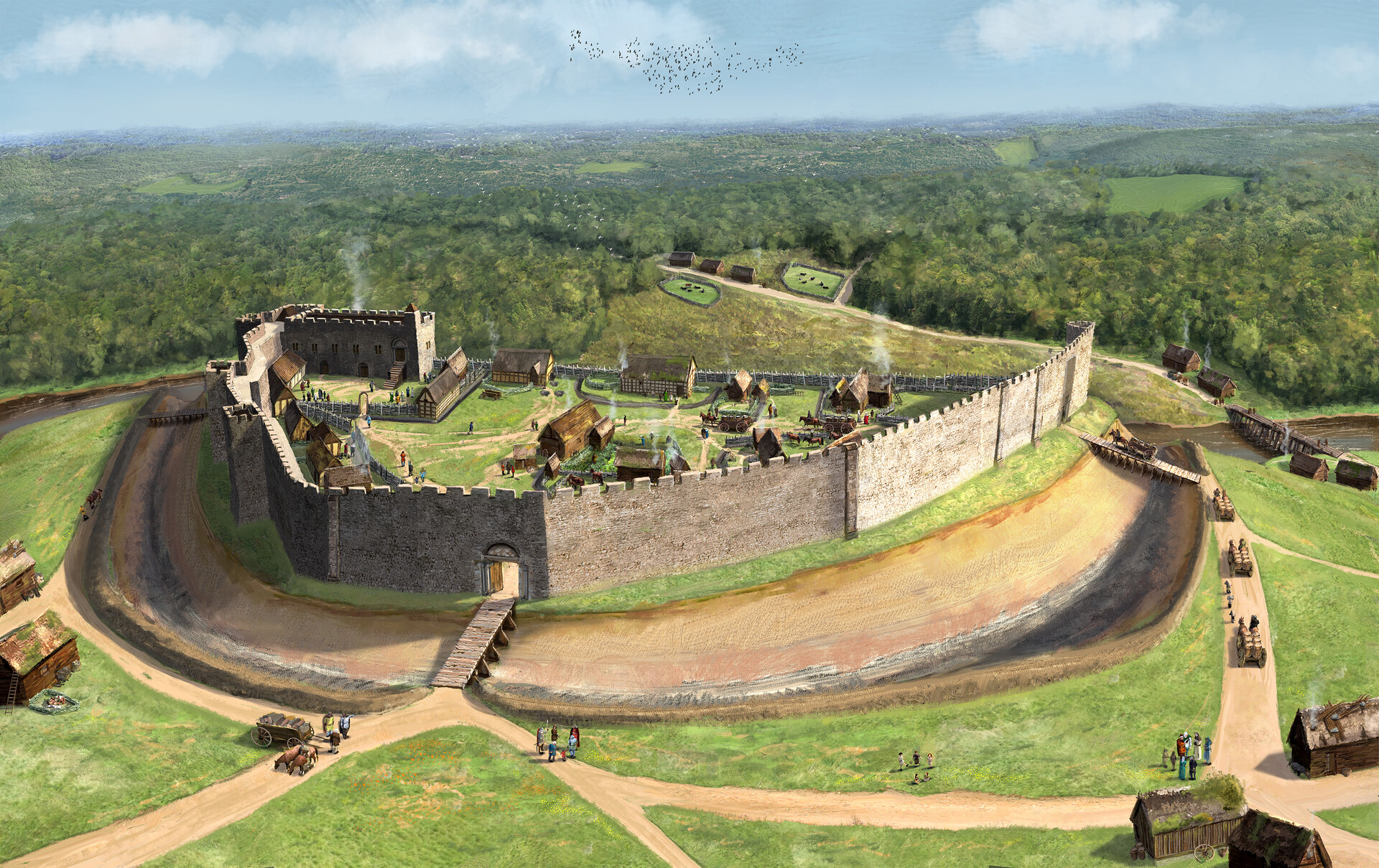
Richmond is a market town and civil parish in North Yorkshire, England and the home of Richmond Castle. After the victory of Norman William the Conqueror in 1066, this area of Northern England was given to his Breton ally Alan Rufus in 1071. Alan fought with William in the Battle of Hastings.
Construction on the castle was began in 1070’s to subdue the unruly North of England. Our Richmond relatives were the first four constables (managers) of the Castle. Read more below about that important role .

Richmond Castle is the best-preserved example of an early stone constructed Norman castle in England and is now maintained as a English Heritage Site.
Visit the English Heritage website for more about Richmond Castle.
The Constables of Richmond Castle
The first four Constables of Richmond Castle are Richmond Family relatives. A constable of a castle is the keeper or manager of castle when the owner was not present.
Historical Context: William the Conqueror, the grandson of Rollo, expanded his kingdom to include England when he conquered the Saxons. Alan Rufus (the red), Count of Penthièvre , a second cousin of the Conqueror, accompanied William as a Viking Warlord and served at his side at the Battle of Hastings. For his part, Alan Rufus was was suitably rewarded with extensive estates that had formerly been owned by Edwin, Earl of Mercia (who died in 1071). He began construction of Richmond Castle in the early 1070’s. Situated overlooking the valley of the River Swale. It was certainly Count Alan who built the curtain wall possibly as early as 1080 as well as the elaborate Gateway that later formed the basis of the Great Keep. He also added Scolland’s Hall in the south corner overlooking the river intended to serve as a lavish residence fit for a person of his status. Unusually Richmond Castle was built in stone from its conception unlike most Norman fortifications that were originally earth and timber structures and later upgraded.
William the Conqueror was the grandson of Rollo, first Duke of Normandy. Alan Rufus was the grandson of Richard the second Duke of Normandy, had a daughter named Hawise. Hawise married Eudo, the son of Geoffrey Duke of Brittany. Hawise and Eudo’s third child was Alan Rufus. This made William the Conqueror and Alan Rufus de Richmond second cousins. Both had the same great-grandfather, Rollo.
Richmond Castle, founded in 1071, is a gray stone fortress standing proudly atop a rocky spur overlooking the turbulent River Swale. The castle’s primary purpose was, apparently, to defend Alan Rufus de Richmond and his followers against attacks by the dispossessed Saxons of the area who didn’t look too kindly upon their Norman conquerors. Richmond Castle however saw very little fighting.
Contstables
-
Hasculfus V de Musard Twenty-fifth Great Grandfather (1040-?)
-
Hasculph Musard Twenty-fourth Great Grandfather (1070-?) (aka: Hughe)
-
Roaldus de Richmond Twenty-third Great Grandfather (1120-1200) (aka: Sir Rould d’ Adoube de Richmond) \
-
Hasculfus Musard de Richmond’s second son Rouldus fitz Hasculfus married Garsiana, the daughter of his uncle Enisan Musard de Richmond and therefore became heir to the job of Constable of Richmond Castle, build by Alan Rufus his cousin several times removed
-
-
Enisan Musard de Richmond ( a known vassal of William the Conqueror and therefore a Royal Land Holder).
-
Enisan Musard de Richmond received 21 manors formerly held by Tor the Saxon. He did not have any male heirs, but two daughters — Garsiana and Adeline.
-






